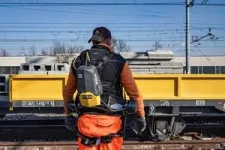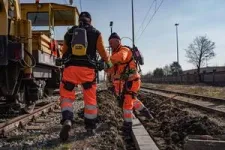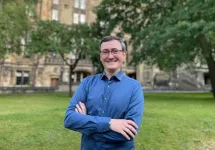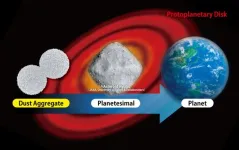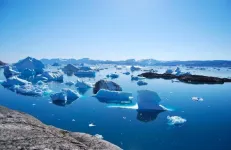(Press-News.org) A scientist from Northumbria University has been awarded almost half a million pounds to develop a new technology which could transform deep-space communication, radio astronomy, medical imaging and airport security scanning.
Dr Juna Sathian has received a grant from the government’s Engineering & Physical Sciences Research Council (EPSRC) to develop a new type of MASER (Microwave Amplification by Stimulated Emission of Radiation) device.
The forerunner to LASERs, MASERs were first discovered in the 1950s. But there has been little development of the technology since then due to the complex and expensive conditions required to make MASERs.
With the ability to detect and amplify extremely weak electromagnetic signals without adding additional noise, MASERs could have a wide variety of potential uses, including more sensitive magnetic resonance body scanners, quantum optical coherence tomography, advanced quantum computer components, portable atomic clocks, and better radio astronomy devices for deep space exploration.
However, until recently, MASERs could only be produced in very cold conditions, a vacuum, and a high magnetic field, meaning they are only currently used in a few specialised applications.
Over the last eight years, Dr Sathian and colleagues have worked to develop a MASER which can operate at room temperature by shining a laser light through organic para-terphenyl crystals doped with pentacene molecules and inorganic diamond crystals with nitrogen-vacancy defects. However, this method is expensive and difficult to replicate in everyday applications.
The EPSRC grant will now allow Dr Sathian to develop a new type of room-temperate MASER powered by LEDs.
After moving to Northumbria University from Imperial College London in 2019, Dr Sathian established the Quantum and Molecular Photonics research group, which is carrying out world-leading research into MASERs. This makes Northumbria University only the third University in the UK with MASER research capabilities, alongside Imperial College London and University College London.
Speaking about the new project, Dr Sathian said: “MASERs have so much potential and could be used in lots of different ways to improve our everyday lives – from improving satellite communications to airport security.
“I’m delighted to be awarded this new investigator grant from the EPSRC as it will allow me to take my MASER research forward, with the aim of producing a MASER device which is cost-effective, safe and environmentally friendly.
“It will also firmly establish the UK, and Northumbria University in particular, as a real centre for research expertise in this area.”
The EPSRC New Investigator Award scheme aims to address gaps identified in the funding landscape and support researchers in developing their own research vision.
Speaking about the grant, Professor John Woodward, Pro Vice-Chancellor for the Faculty of Engineering and Environment at Northumbria University, said: “The research being carried out by Dr Sathian into MASER technology has been recognised as having huge potential and impact, as evidenced by this successful EPSRC New Investigator grant.
“Through Dr Sathian’s work, Northumbria has already developed a reputation for innovation and excellence in the field of MASER research, and this will continue to develop over the coming years thanks to the funding for this new project.”
Find out more about Northumbria University’s Department of Mathematics, Physics and Electrical Engineering.
END
MASER technology scientist awarded funding for new research
A scientist from Northumbria University in the UK has been awarded almost half a million pounds to develop a new technology which could transform deep-space communication, radio astronomy, medical imaging and airport security scanning.
2023-07-21
ELSE PRESS RELEASES FROM THIS DATE:
Researchers decipher the secrets of Benjamin Franklin’s paper money
2023-07-21
Benjamin Franklin may be best known as the creator of bifocals and the lightning rod, but a group of University of Notre Dame researchers suggest he should also be known for his innovative ways of making (literal) money.
During his career, Franklin printed nearly 2,500,000 money notes for the American Colonies using what the researchers have identified as highly original techniques, as reported in a study published this week in the Proceedings of the National Academy of Sciences.
The research team, led by Khachatur Manukyan, an associate research professor ...
KIPA potentially predicts chemotherapy response in triple negative breast cancer
2023-07-21
Researchers at Baylor College of Medicine and collaborating institutions are developing a strategy to predict the response of triple negative breast cancer (TNBC) to chemotherapy, which would be a valuable tool for physicians deciding on the treatment with better probability of success on an individual basis. The study appears in Cancer Research Communications, a journal of the American Association for Cancer Research.
“Multiple research innovations in cancer diagnostics are on display in this work,” said co-corresponding author Dr. Matthew Ellis, member of the Lester and Sue Smith Breast Center and the Dan ...
On the hunt for strangeness
2023-07-21
NEWPORT NEWS, VA – Peter Hurck has been searching for strange particles, named such because they contain strange quarks, since beginning work on his Ph.D. As the 2023 Jefferson Science Associates (JSA) Postdoctoral Prize winner, he’ll continue conducting data analyses to identify strange particles and learn about their properties.
Many of these experiments that contribute to the data Hurck is analyzing are conducted at the U.S. Department of Energy's Thomas Jefferson National Accelerator Facility, which is managed and operated by JSA.
“Strangeness hasn't been studied as much because it's quite ...
ASBMB expresses concerns on proposed NIH budget cuts
2023-07-21
On July 19, the American Society for Biochemistry and Molecular Biology released a statement expressing concerns on the National Institutes of Health budget proposed in the House Labor, Health and Human Services, Education and Related Agencies funding bill. The bill allocates only $44.7 billion for NIH, which represents a 6.4% decrease from fiscal year 2023 levels and would have detrimental repercussions for the National Institute of Allergy and Infectious Diseases, the National Institute of Neurological Diseases and Stroke, the National Cancer Institute and the National Institute ...
To stick or to bounce: Size determines the stickiness of cosmic dust aggregates
2023-07-21
Microparticle dust aggregates, which are thought to play a role in the formation of new planets, are less likely to stick together after a collision when the aggregates are larger.
Current evidence suggests that microparticles of cosmic dust collide and stick together to form larger dust aggregates that may eventually combine and develop into planets. Numerical models that accurately characterize the conditions required for colliding microparticle aggregates to stick together, rather than bounce apart, are therefore ...
Long-term changes in waves and storm surges have not impacted global coastlines
2023-07-21
Changes in ocean wave and storm conditions have not caused long-term impacts on sandy coastlines in the past 30 years, a new study has found.
Published today in Scientific Reports, the study draws on data from 30 years of global satellite and model studies to investigate whether changes in ocean wave conditions will have an impact on the stability of coastal environments.
The compounding effect of climate change driven variations in waves, storm surge and sea level rise is projected to lead to shoreline position change along most of the world’s sandy coasts.
A team ...
Subseasonal transition of sea-ice anomalies in the Barents–Kara Sea in winter modulated by the “warm Arctic–cold Eurasia” pattern
2023-07-21
The “warm Arctic–cold Eurasia” is one of the most significant patterns of winter climate system changes in the mid-high latitudes of the Northern Hemisphere. In winter 2020/21, this large-scale pattern underwent a significant and intense subseasonal reversal between the early and late winter. At the same time, the sea-ice anomalies in the Barents–Kara Sea changed from being significantly negative in early winter to positive in late winter. For the slow-varying process of winter sea ice, the rapid freezing ...
Miocene period fossil forest of Wataria found in Japan
2023-07-21
An exquisitely preserved fossil forest from Japan provides missing links and helps reconstruct a whole Eurasia plant from the late Miocene epoch.
Complete plant fossils are seldom found as a single piece, as wood, leaves, flowers, fruits, seeds, or pollen detach easily from plants. This results in leaves and trunks having separate scientific names. Putting together the different parts to reveal the complete plant is like putting together a jigsaw puzzle. Connecting these dots and reconstructing plants is important to establish their taxonomic identity—their ...
Going the distance for better wireless charging
2023-07-21
A better way to wirelessly charge over long distances has been developed at Aalto University. Engineers have optimized the way antennas transmitting and receiving power interact with each other, making use of the phenomenon of “radiation suppression”. The result is a better theoretical understanding of wireless power transfer compared to the conventional inductive approach, a significant advancement in the field.
Charging over short distances, such as through induction pads, uses magnetic near fields to transfer power with high efficiency, but at longer distances the efficiency dramatically drops. New research shows that this high efficiency ...
Are shared medical appointments the key to solving global healthcare shortages?
2023-07-21
This research was conducted by Nazlı Sönmez, ESMT Berlin; Kavitha Srinivasan and Rengaraj Venkatesh, Aravind Eye Hospital (India); Ryan W. Buell, Harvard Business School; and Kamalini Ramdas, London Business School. The researchers wanted to understand the impact of shared medical appointments on patient experience (knowledge gained and satisfaction) and behavior (follow-up rates and medication compliance rates).
In shared medical appointments (SMAs), patients with the same medical condition meet with the physician in a group, with each patient receiving attention in turn. The physician shares information customized to a patient’s specific needs as well ...
LAST 30 PRESS RELEASES:
First Editorial of 2026: Resisting AI slop
Joint ground- and space-based observations reveal Saturn-mass rogue planet
Inheritable genetic variant offers protection against blood cancer risk and progression
Pigs settled Pacific islands alongside early human voyagers
A Coral reef’s daily pulse reshapes microbes in surrounding waters
EAST Tokamak experiments exceed plasma density limit, offering new approach to fusion ignition
Groundbreaking discovery reveals Africa’s oldest cremation pyre and complex ritual practices
First breathing ‘lung-on-chip’ developed using genetically identical cells
How people moved pigs across the Pacific
Interaction of climate change and human activity and its impact on plant diversity in Qinghai-Tibet plateau
From addressing uncertainty to national strategy: an interpretation of Professor Lim Siong Guan’s views
Clinical trials on AI language model use in digestive healthcare
Scientists improve robotic visual–inertial trajectory localization accuracy using cross-modal interaction and selection techniques
Correlation between cancer cachexia and immune-related adverse events in HCC
Human adipose tissue: a new source for functional organoids
Metro lines double as freight highways during off-peak hours, Beijing study shows
Biomedical functions and applications of nanomaterials in tumor diagnosis and treatment: perspectives from ophthalmic oncology
3D imaging unveils how passivation improves perovskite solar cell performance
Enriching framework Al sites in 8-membered rings of Cu-SSZ-39 zeolite to enhance low-temperature ammonia selective catalytic reduction performance
AI-powered RNA drug development: a new frontier in therapeutics
Decoupling the HOR enhancement on PtRu: Dynamically matching interfacial water to reaction coordinates
Sulfur isn’t poisonous when it synergistically acts with phosphine in olefins hydroformylation
URI researchers uncover molecular mechanisms behind speciation in corals
Chitin based carbon aerogel offers a cleaner way to store thermal energy
Tracing hidden sources of nitrate pollution in rapidly changing rural urban landscapes
Viruses on plastic pollution may quietly accelerate the spread of antibiotic resistance
Three UH Rainbow Babies & Children’s faculty elected to prestigious American Pediatric Society
Tunnel resilience models unveiled to aid post-earthquake recovery
Satellite communication systems: the future of 5G/6G connectivity
Space computing power networks: a new frontier for satellite technologies
[Press-News.org] MASER technology scientist awarded funding for new researchA scientist from Northumbria University in the UK has been awarded almost half a million pounds to develop a new technology which could transform deep-space communication, radio astronomy, medical imaging and airport security scanning.

